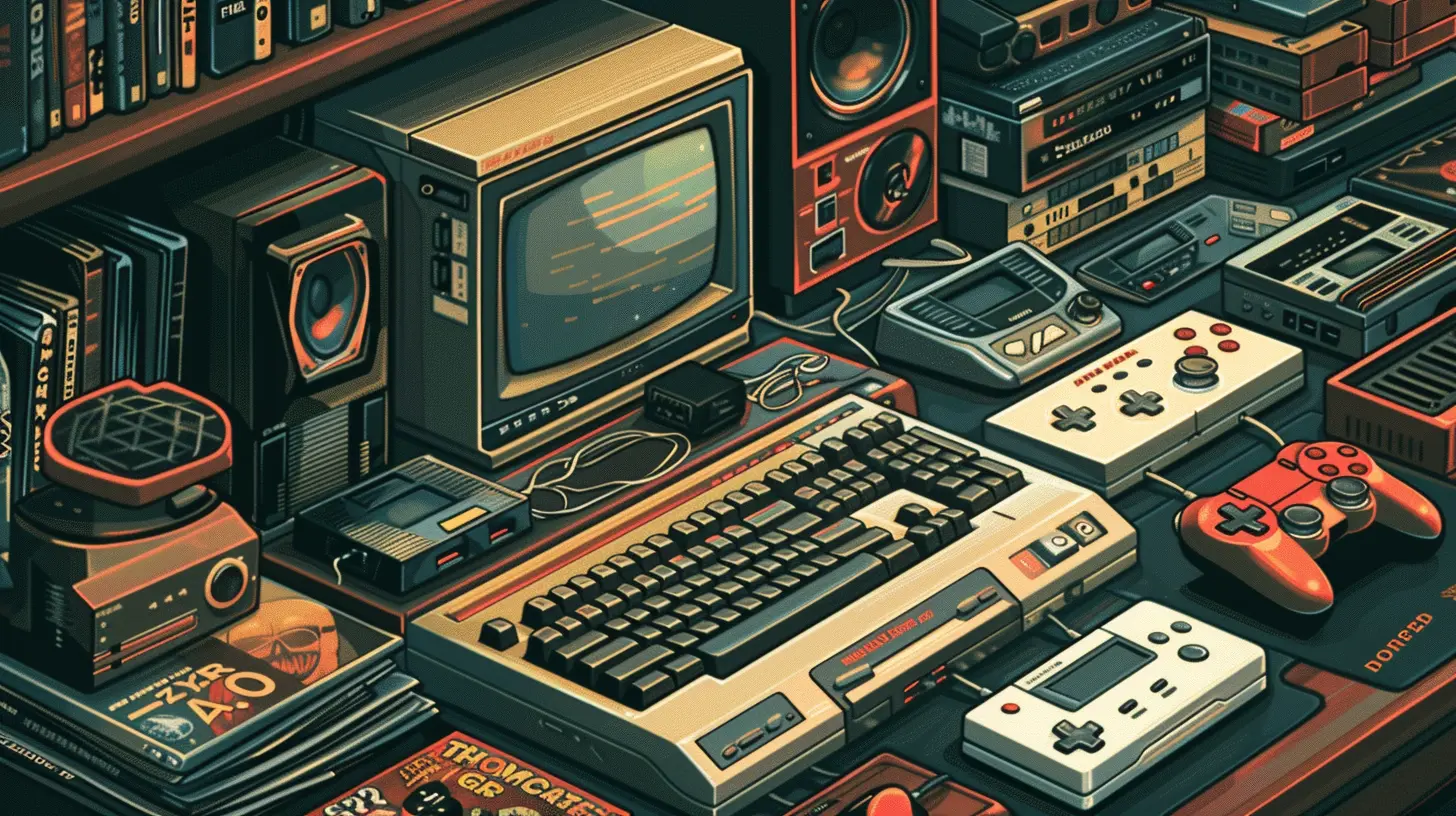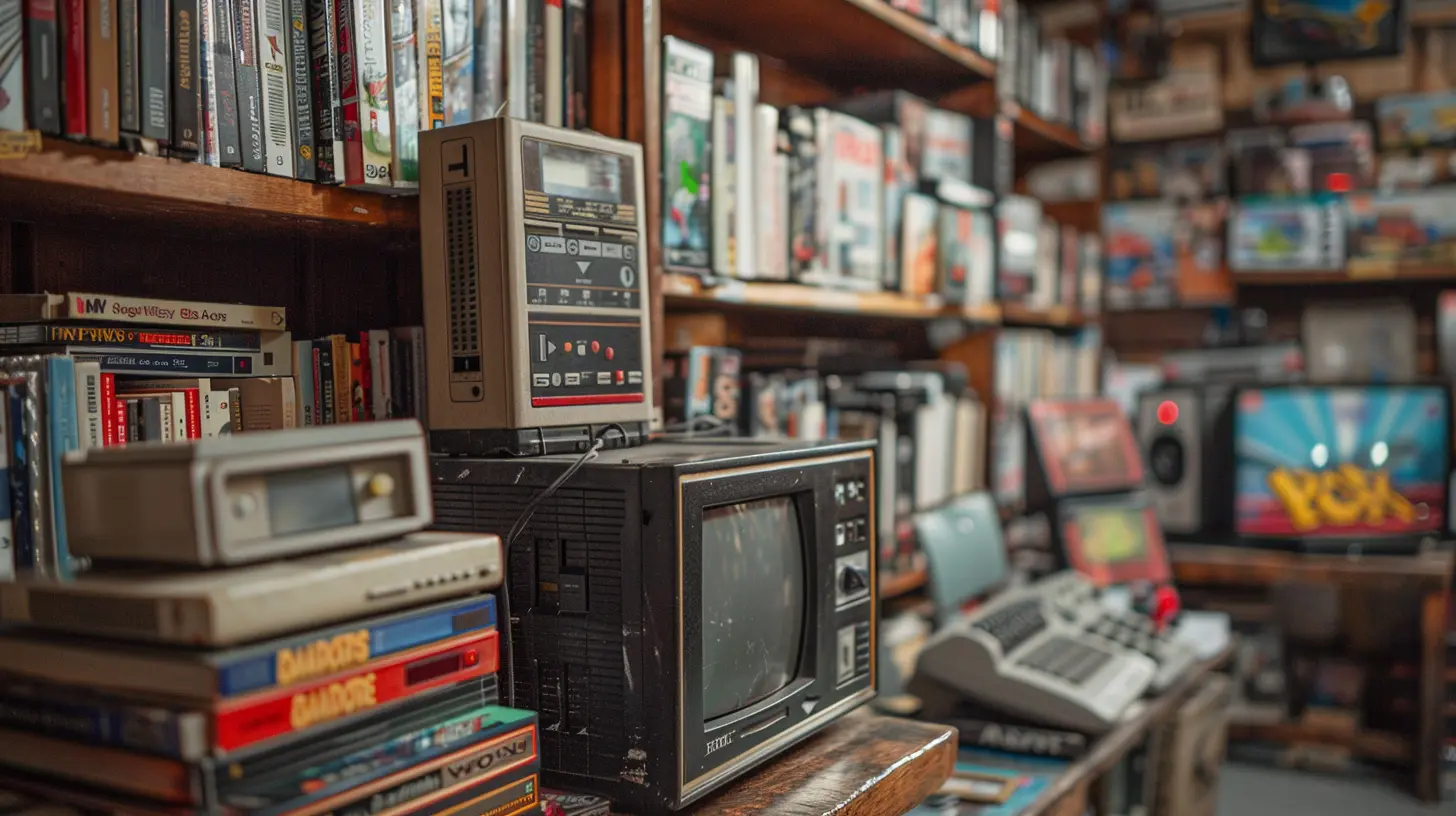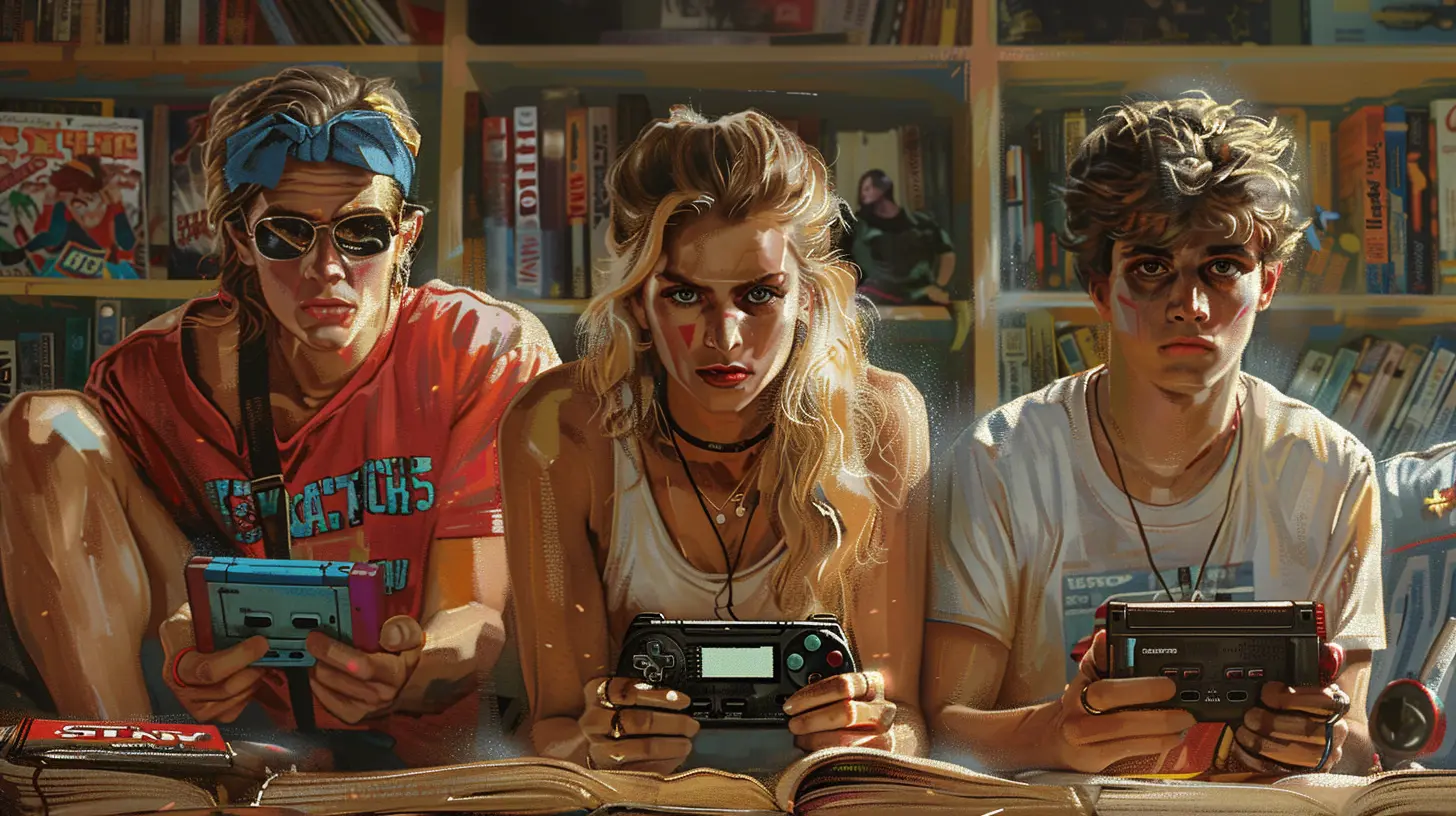How Early Gaming Magazines Shaped the Culture of Gamers
10 December 2024
When we talk about the evolution of gaming, it’s easy to focus on the consoles, the groundbreaking games, or the rise of online multiplayer. But let’s pump the brakes for a second and rewind to a time before the internet was a thing—back to the golden age of early gaming magazines. Remember flipping through glossy pages, devouring every word about cheat codes, walkthroughs, and the latest game releases? If you’re nodding, you already know these magazines were more than just monthly publications; they were the heart and soul of gaming culture.
Early gaming magazines didn’t just report on games—they helped shape how we played, talked about, and even thought about gaming. These bad boys were our guides, our forums, and our hype machines, all rolled into one. So, let’s dive in and take a closer look at how these magazines left an indelible mark on gamer culture.
The Birth of Gaming Magazines: A Nostalgic Start
In the late '80s and early '90s, gaming was still finding its footing as a mainstream pastime. Consoles like the NES and Sega Genesis were gaining steam, but there wasn’t an easy way to stay in the loop about what was happening in the gaming world. Cue gaming magazines like Nintendo Power, GamePro, and Electronic Gaming Monthly (EGM) stepping into the spotlight. These publications became the go-to sources for gamers hungry for news, strategies, and reviews.Think about it: No Reddit threads, no YouTube walkthroughs, no Twitch streams. If you wanted tips to beat Super Mario Bros. or figure out how the heck to finish that tricky dungeon in The Legend of Zelda, you turned to these magazines. They were like your older sibling who always knew the coolest tricks—or maybe the wizard in the corner of the tavern with the rare treasure map.
Cheat Codes and Walkthroughs: The Secret Sauce
Let’s be real—one of the biggest reasons we loved gaming magazines back in the day was for the cheat codes. Oh man, the thrill of typing in a random combination of buttons and unlocking unlimited lives or invincibility? That stuff was legendary. And where did those magical codes come from? Gaming magazines.Magazines like Tips & Tricks specialized in compiling all the cheat codes and secrets you could ever dream of. They gave us the power to beat games we thought were impossible. Walkthroughs and strategy guides were another godsend. Before YouTube “Let’s Play” videos, these step-by-step guides were the ultimate lifeline for gamers stuck on tough levels.
These cheats and tips didn’t just make us better players—they gave us something to talk about. Gamers would share their findings at school or during hangouts, creating a shared sense of excitement and camaraderie. In hindsight, it was like meme culture before memes even existed.
A Gateway to Community Before the Internet
Before online forums or Discord servers, gaming magazines were the epicenter of community. Remember those “Letters to the Editor” sections where gamers could send in their questions, tips, or fan art? These weren’t just a fun read—they were the closest thing we had to a social network specifically for gamers.Fans could see their usernames or drawings published in these magazines, giving them a sense of belonging. Some magazines held contests where you could win game-themed prizes, or they showcased high scores from readers across the globe. It was grassroots community-building at its finest.
Also, let’s not forget the role of opinionated reviews—oh, the debates they sparked! Everyone had that one friend who wanted to argue about why GamePro's five-star ratings were better than EGM's 10-point scale. Gaming magazines effectively laid the groundwork for the spirited discussions (and outright flame wars) we see today in comment sections and Twitter threads.
The Art of Hype: Marketing Meets Passion
If there’s one thing gaming magazines excelled at, it was drumming up hype. Every issue was packed with previews, exclusive screenshots, and juicy tidbits about upcoming releases. They turned every game into a must-play event, even if it was just a half-decent platformer with slightly better graphics than its predecessor.Sure, you might argue that they were marketing machines, and yeah, you’d be totally right. But it didn’t feel like we were being sold to—it felt like we were in on a secret, like we were getting privileged insider info. We’d pore over the pages, analyzing every screenshot, imagining what it would feel like to play those games.
Gaming magazines also helped shape the idea of gaming as a lifestyle. Their coverage extended beyond the games themselves to include interviews with developers, sneak peeks at new consoles, and even in-depth articles on gaming culture. They didn’t just tell you what to play—they showed you how to be a gamer.
Defining the “Gamer” Identity
Early gaming magazines didn’t just support the culture—they helped define it. They gave gamers a shared language: terms like “Easter egg,” “lag,” or “button-mashing” became mainstream partly because of how frequently they were used in these publications.Also, gaming magazines were relentless in celebrating the passion and creativity of gamers. They amplified the idea that being a gamer wasn’t just about playing games; it was about embracing a whole way of life. Whether you were rocking Street Fighter tournaments or solo-grinding through RPGs, these magazines made you feel like part of something bigger.
They also played a huge role in normalizing gaming as a legitimate hobby. Remember, back in the day, gaming wasn’t the billion-dollar industry it is now. Owning a console or PC meant you were considered “nerdy” or “geeky.” Magazines helped shift that narrative by legitimizing the medium and celebrating the artistry behind it.
Bridging the Gap Between Fans and Developers
Another major impact of early gaming magazines was how they connected gamers with developers. Interviews with game designers, behind-the-scenes features, and "making of" articles were all staples of these mags. Reading a developer’s thoughts on their inspiration for a game or their challenges during production gave us a new appreciation for the medium.In a way, these magazines were like the gaming world’s version of DVD extras. They pulled back the curtain and showed us that games weren’t just commodities—they were art.
The Decline of Gaming Magazines: The Internet Takes Over
Of course, all good things must come to an end. By the late 2000s, gaming magazines were on a steep decline. Why? The internet, plain and simple. Online platforms like GameFAQs, IGN, and YouTube made it easier (and cheaper) to access gaming content. Why pay for a monthly magazine when you could get instant updates and endless walkthrough videos online?That’s not to say gaming magazines completely disappeared—some still exist, albeit in a more niche capacity. But their role in the broader gaming ecosystem has undeniably diminished. Still, their legacy lives on. The sense of community, the obsessive coverage, the sheer love of gaming—they planted seeds that have grown into today’s hyper-connected gaming culture.
The Legacy of Early Gaming Magazines
Even though gaming magazines have mostly faded into history, their influence is still felt in today’s gaming culture. Modern gaming websites, YouTubers, and streamers owe a lot to those old publications. The way we consume gaming news, obsess over leaks, and share strategies? All of that has roots in the pages of magazines like Nintendo Power and GamePro.And let’s not forget the nostalgia factor. For so many gamers, those magazines were a formative part of their childhood. They weren’t just periodicals—they were portals to another world.
Conclusion
Early gaming magazines played a monumental role in shaping the culture of gamers. They were our guides, our hype machines, and our communities in a pre-internet world. They gave us cheat codes for our favorite games, taught us to respect the artistry behind development, and helped forge the identity of what it means to be a gamer.While they’ve mostly been replaced by digital platforms, their impact is still visible in every aspect of gaming culture today. So the next time you fire up your favorite console or debate whether a game deserves a 7 or an 8 on Metacritic, take a moment to remember those glossy pages that started it all.
all images in this post were generated using AI tools
Category:
Gaming HistoryAuthor:

Madeleine McCaffrey
Discussion
rate this article
13 comments
Raegan Rocha
Early gaming magazines were the OG influencers, shaping gamer culture long before social media. They had us drooling over pixelated heroes before it was cool!
February 2, 2025 at 5:42 PM

Madeleine McCaffrey
Absolutely! Early gaming magazines laid the groundwork for gamer culture, creating excitement and community long before the rise of social media. Their influence on shaping fandom and trends is undeniable!
Greta Black
Early gaming magazines not only informed players about new releases but also fostered a sense of community and identity among gamers. By sharing tips, reviews, and culture, they transformed gaming from a solitary hobby into a vibrant, interconnected culture, shaping the future of the industry.
January 28, 2025 at 4:49 AM

Madeleine McCaffrey
Absolutely! Early gaming magazines played a crucial role in connecting gamers, sharing knowledge, and building a community that shaped the gaming culture we know today. Their impact on the industry is profound and lasting.
Rosanna McCall
Early gaming magazines didn't just inform; they ignited a cultural revolution. With bold critiques and passionate fandom, they sculpted the very identity of gamers, creating a vibrant community that dared to challenge norms. Without them, we'd lack our gaming heritage today.
January 24, 2025 at 4:51 PM

Madeleine McCaffrey
Absolutely! Early gaming magazines were pivotal in shaping gamer identity and community, fostering passionate discussions and a sense of belonging that continues to influence gaming culture today.
Lilith Barker
Great insights! Nostalgia fuels today’s gaming passion!
January 19, 2025 at 5:55 PM

Madeleine McCaffrey
Thank you! Nostalgia indeed plays a powerful role in connecting gamers to their roots and shaping contemporary gaming culture.
Hugo McGuffey
This article brilliantly highlights the pivotal role early gaming magazines played in shaping gamer culture. By fostering community and providing insightful content, they not only informed players but also created a shared identity. It's fascinating to see how these publications set the stage for today's gaming landscape.
January 16, 2025 at 6:14 PM

Madeleine McCaffrey
Thank you for your insightful comment! I'm glad you appreciated the article's exploration of early gaming magazines and their lasting impact on gamer culture.
Kristy Robinson
This article beautifully highlights the profound impact early gaming magazines had on shaping our community. They fostered connection and creativity, making gaming culture richer and more inclusive for everyone.
January 13, 2025 at 6:16 AM

Madeleine McCaffrey
Thank you for your thoughtful comment! I completely agree—early gaming magazines played a crucial role in building a vibrant, connected gaming community.
Betsy Soto
This article provides valuable insights into the early gaming magazines and their influential role in shaping gamer culture. It's fascinating to see how these publications laid the groundwork for today's community.
January 7, 2025 at 5:07 PM

Madeleine McCaffrey
Thank you! I'm glad you found the article insightful. Early gaming magazines indeed played a crucial role in building the community we see today.
Pandora Lawrence
Early gaming magazines played a crucial role in shaping community, fostering dialogue, and influencing industry trends among gamers.
January 4, 2025 at 3:46 AM

Madeleine McCaffrey
Absolutely! Early gaming magazines were pivotal in building a sense of community, sparking discussions, and steering industry trends, ultimately shaping the culture of gamers.
Lumen Dodson
Great insights on the influence of early gaming magazines! It's fascinating to see how they shaped the gaming culture and community we cherish today. Thanks for sharing this informative piece!
December 30, 2024 at 4:40 AM

Madeleine McCaffrey
Thank you! I'm glad you found it insightful. Early gaming magazines indeed played a crucial role in shaping our beloved gaming culture!
Phoebe Harris
In the pages of yesteryears, where pixel dreams took flight, Ink and paper wove a tapestry, igniting passion's light. Whispers of adventure danced on every line, Shaping a culture, forging a bond divine. In gaming's heart, those magazines still sing— A legacy of joy, where nostalgia takes wing.
December 23, 2024 at 5:50 PM

Madeleine McCaffrey
Thank you for capturing the essence of early gaming magazines so beautifully! They truly were a significant part of our journey, igniting passion and fostering community among gamers.
Lark Blevins
Early gaming magazines played a crucial role in shaping gamer culture by providing insights, tips, and community connections, ultimately influencing gaming trends and the development of gaming identity.
December 18, 2024 at 3:33 AM

Madeleine McCaffrey
Absolutely! Early gaming magazines were pivotal in fostering community, sharing knowledge, and shaping trends, significantly impacting the identity of gamers.
Upton Kane
What a fantastic trip down memory lane! Early gaming magazines were like treasure maps for gamers, guiding our passion and sparking creativity. It's amazing to see how they've shaped our community. Keep celebrating the roots of our beloved gaming culture!
December 13, 2024 at 3:35 PM

Madeleine McCaffrey
Thank you! I'm glad you enjoyed the trip down memory lane. Early gaming magazines truly were essential in shaping our community and igniting creativity among gamers!
Skye Martin
Before the internet, whispers of adventure and pixels danced through the pages of early gaming magazines. They were more than ink and paper; they forged bonds, sparked rivalries, and unraveled the enigma of a culture that thrived in shadows.
December 11, 2024 at 4:35 PM

Madeleine McCaffrey
Absolutely! Early gaming magazines were pivotal in creating a communal space for gamers, igniting passions and rivalries while providing insights into a burgeoning culture that laid the groundwork for today's gaming community.
MORE POSTS

The Appeal of Arcade-Style Sports Games

How Virtual Reality Could Revolutionize the Future of E-Sports

The Impact of Streaming Platforms on E-Sports Growth

Retro Gaming on Modern Consoles: The Best Emulation Options

Exploring the Hottest Trends in Gaming Soundtracks

How Game Developers Are Shaping the Future of E-Sports Ecosystems

How to Stay Calm and Confident in High-Stakes Card Games
Pixel Art Perfection: Celebrating Retro Design

Must-Play Indie Games That Teens Will Love